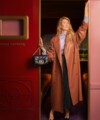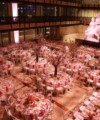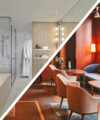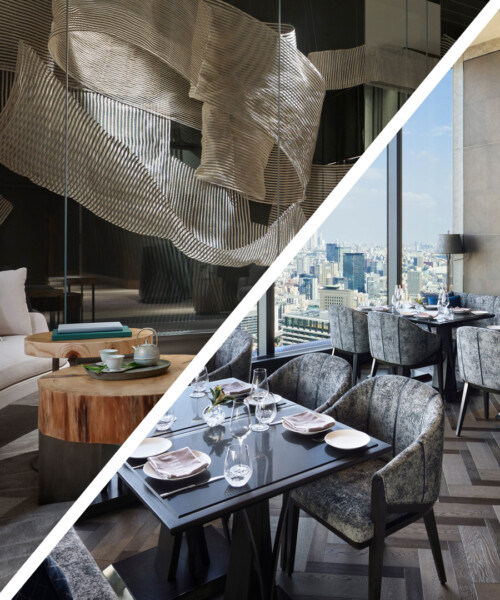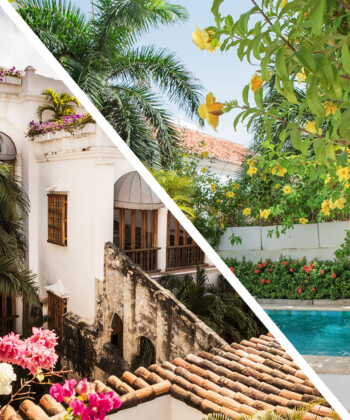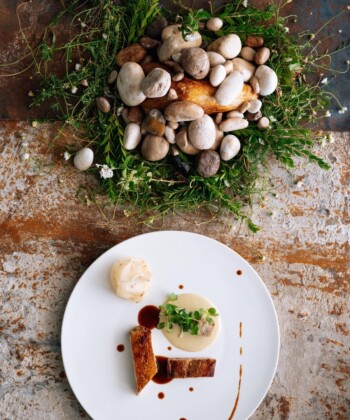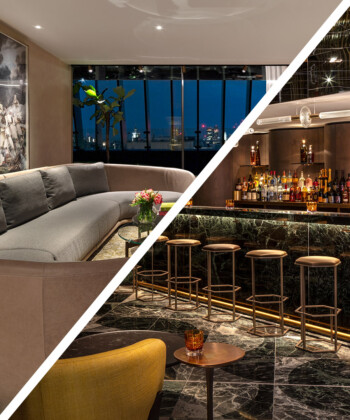In a city known for impeccable service, the Four Seasons Tokyo at Otemachi stands particularly tall. 39 stories tall, to be exact. This 190-room hotel, not yet two years old, occupies the top six floors of the Otemachi One Tower. This means that views abound of the stunning Tokyo cityscape, of course, but also the Imperial Palace and Gardens, and on particularly clear mornings, Mount Fuji in the distance. Convenience is the name of the game, too, at Otemachi, the city’s business district. The building’s basement offers direct access to Tokyo’s largest subway station and five lines so no trek is too complicated. Of particular note: Pigneto, a relaxed brasserie that shows off a contemporary Japanese take on Italian cuisine via top-notch pizzas and pastas, and the Infuse Spa, where an hour-long Yakusugi massage evokes the peacefulness of forest bathing and Japanese cedar trees and is particularly helpful when it comes to jet lag.
DuJour spoke with the property’s general manager Andrew Debrito to discover what makes it so special.
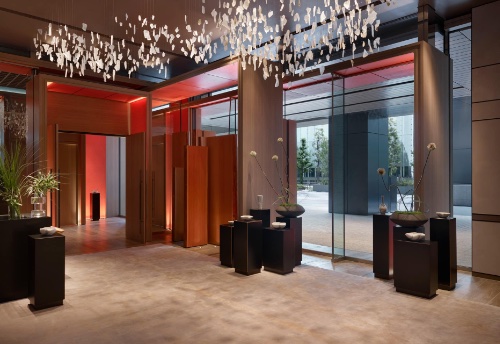
The lobby at Four Seasons Tokyo at Otemachi
What’s the most requested room at the property?
Panoramic Suite #3733
What makes it so special?
This corner suite has a panoramic view of Tokyo’s iconic cityscape featuring landmarks including Imperial Palace Gardens, Tokyo Tower and Mt. Fuji on a clear day. With a spacious living room, floor to ceiling windows, and softs neutral colors, the design and layout of this suite provides a sense of sky-high serenity above the bustling streets of Tokyo. Soak in Japan’s famed seasonality right from our signature Four Seasons bed.
What is the nightly rate for this room?
From $2,995
What’s an interesting tidbit about the hotel that speaks to its status as an icon?
The hotel has all its restaurants, bar and lounge on one floor making it seamless to go from one establishment to the next. Each outlet has its own well-developed concept. Est is the contemporary French Michelin-starred restaurant sourcing 95 percent of all its products from Japan. Virtù celebrates the two drinking cultures of Paris and Tokyo with its cocktails incorporating ingredients from Japan and France. In addition Pigneto, our authentic Italian restaurant, features an outdoor terrace (a rarity in the city especially from the height of a 39th floor) and The Lounge that offers arguably the best afternoon tea with an unparalleled view of Tokyo–just wait till you see it at golden hour.
What’s your personal favorite room? Why?
I love gardens and nature, so my favorite room is the Four Seasons Suite. Of all our guest rooms and suites, it has the most unobstructed views of the Imperial Palace gardens with floor to ceiling windows that run along the side of the room including the bathtub. The suite itself is an oversized-open floor plan of 818 square feet so it feels contemporary yet cozy and comfortable.
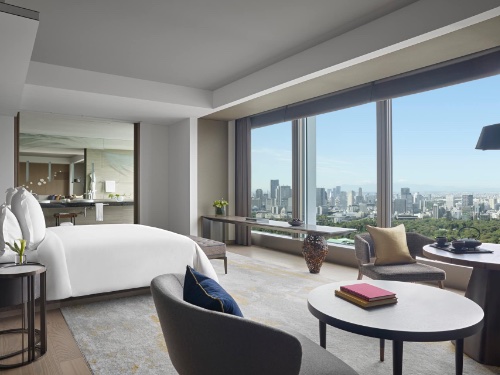
An Imperial Garden View suite at Four Seasons Tokyo at Otemachi
What special perk or amenity do you offer that no one knows about?
It’s more overlooked, but our in-room teas are exclusively from Japan. Most guests are familiar with green tea, but we also wanted to showcase roasted green and black teas as alternatives to an English Breakfast or a Darjeeling. For our herbal tea option, I hand selected–which involved many hours of tasting a tremendous amount of Japanese teas–the yuzu (a popular Japanese citrus) and kaki leaf (dried persimmon leaf) blend that offers a bright refreshing yet soothing bitter taste to the palate.
What’s your favorite design element on property?
We have an incredible array of contemporary Japanese artwork found throughout the Hotel. There are so many noteworthy ones, but I have to narrow it down to two of my favourites: Tsuyu No Ma (in between dew) and Seasons. Mounted right off the main guest-elevators, Tsuyu No Ma by Haruko Tsuji, captures the journey of a single dewdrop over a quartet of paintings as it tumbles, drips, soaks and finally flows away. The artworks reminds viewers to be present and appreciate previous moments – just like the fleeting beauty of a drop of dew. When our guests gaze up to the ceiling during their check-in, they’ll notice a striking amalgamation of East meets West. An oversized European lampshade gives way to a dome-shaped base featuring Japanese calligraphy on the inside. Free-form calligrapher Nobuko Kawahara writes “seasons” using the characters for spring, summer, autumn and winter as markings. The circular shape of the “chandelier” is inspired by the sun, as depicted on the Japanese national flag.


